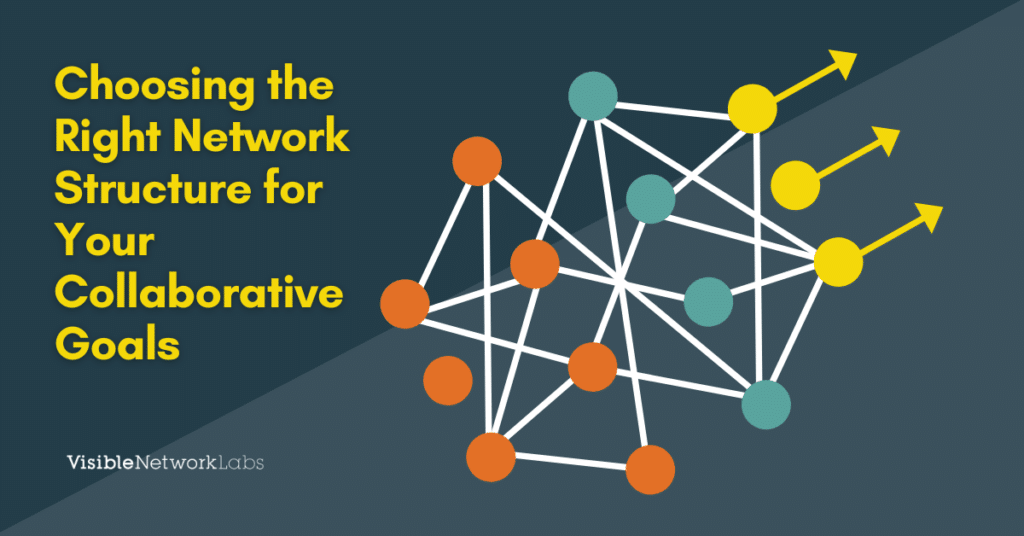In today’s interconnected world, successful collaboration is key to achieving organizational and community objectives. Whether you’re leading a grassroots advocacy campaign, coordinating disaster relief, or driving innovation within your organization, the structure of your network plays a crucial role in determining your success. Network science offers valuable insights that can help you strategically choose the right network structure to align with your goals.
Table of Contents
What is Network Structure?
At its core, a network is a collection of nodes (e.g., individuals, organizations) connected by relationships or ties. The way these nodes are connected—the network’s structure or topology—can significantly influence how information flows, how resources are allocated, and how effectively the network can achieve its goals.
Not all network structures are the same, with significant research on how varying patterns of connection produce unique outcomes. Different network structures offer distinct advantages depending on the objectives at hand.
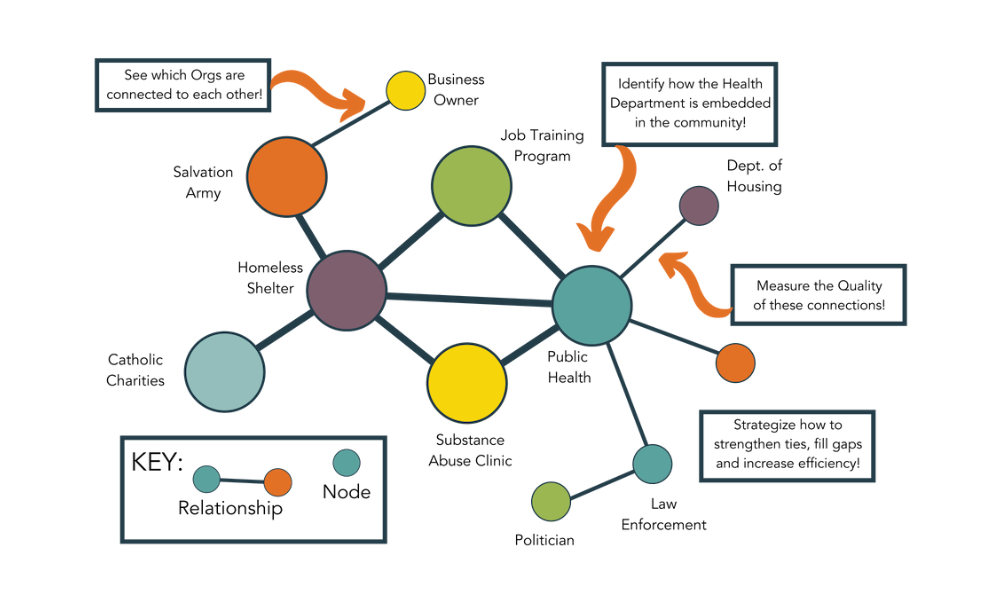
6 Examples of Aligned Network Structures and Strategies
Here are six examples of network structures that align with and support a variety of different real-world collaborative strategies and objectives.
1. Efficient Information Dissemination: The Power of Small-World Networks
If your goal is to spread information quickly and efficiently across a large group, a small-world network is your best bet. Small-world networks are characterized by high local clustering (tight-knit groups) and short average path lengths between any two nodes. This structure allows information to travel rapidly within clusters and across the broader network, minimizing delays and ensuring that your message reaches its intended audience swiftly.
Example: Public health campaigns often rely on small-world networks to disseminate critical information quickly across different community groups, ensuring that everyone is informed and can take necessary action.
2. Driving Innovation: Embrace Diversity with Loosely Connected Networks
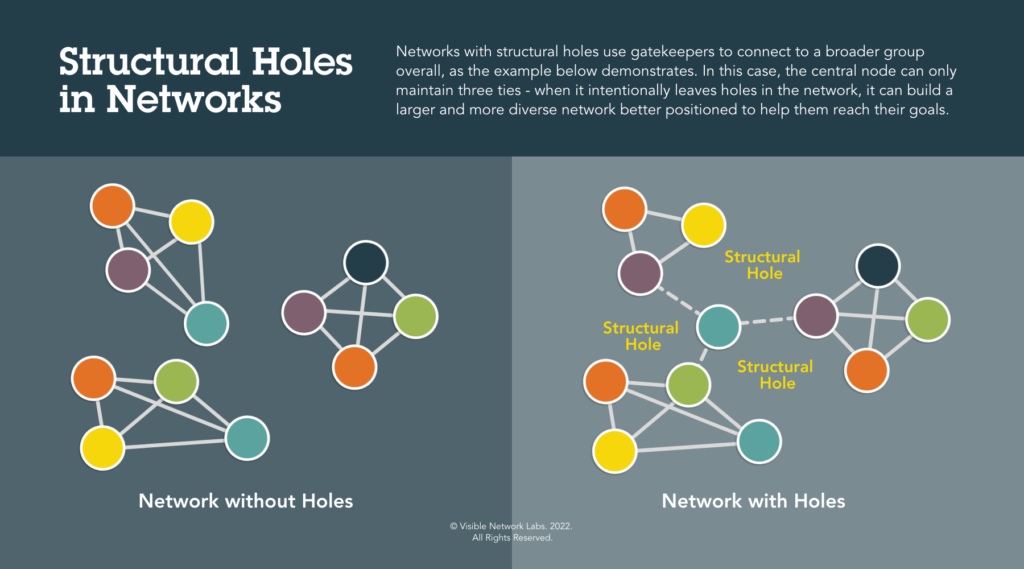
Innovation thrives in environments where diverse ideas collide. To foster creativity and problem-solving, a network with many weak ties and structural holes—gaps between different groups—is ideal. This type of network connects otherwise unconnected groups, allowing for the exchange of new ideas and perspectives. By bridging these structural holes, you can create opportunities for novel solutions to emerge.
Example: Research and development teams benefit from networks where members have connections to diverse external contacts, enabling them to bring in fresh ideas that drive innovation.
3. Building Strong Cohesion: Dense, Highly Connected Networks
For goals that require strong cohesion and collective action, a dense network with high connectivity is most effective. In such networks, most nodes are directly connected, which fosters trust and alignment among members. This structure is particularly useful when you need to mobilize a group toward a common cause, as it ensures that everyone is on the same page and can coordinate their efforts seamlessly.
Example: Grassroots advocacy groups often rely on dense networks to maintain strong connections among members, ensuring that they can act in unison to achieve their objectives.
4. Resource Allocation and Coordination: Centralized Networks for Efficiency
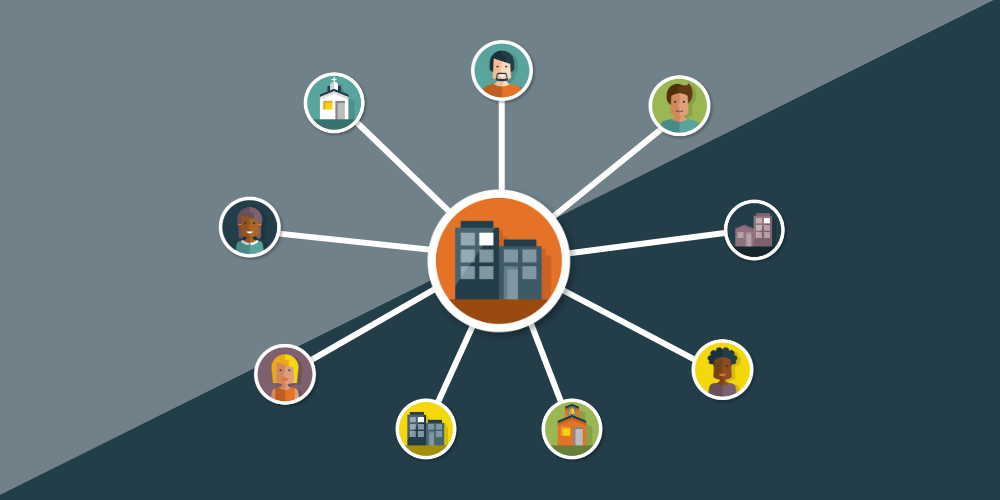
When it comes to efficiently allocating resources and coordinating activities, a centralized network is the way to go. In a centralized network, one or a few central nodes have a high degree of connections and control the flow of resources and information. This structure allows for efficient decision-making and resource distribution, making it ideal for situations where coordination is critical.
Example: Humanitarian organizations often use centralized networks to coordinate relief efforts, ensuring that resources are distributed quickly and effectively to where they are most needed.
5. Ensuring Resilience and Adaptability: The Strength of Decentralized Networks
In situations where resilience and adaptability are paramount, a decentralized network offers significant advantages. Unlike centralized networks, decentralized networks have no single point of control, making them more robust in the face of disruptions. If one part of the network fails, the rest can continue functioning, allowing the network to adapt to changing circumstances.
Example: Emergency response systems benefit from decentralized networks, which allow for rapid adaptation and continued operation even when parts of the network are compromised.
6. Bridging Diverse Groups: Networks that Bridge Structural Holes
When your goal is to bring together diverse groups or communities, a network that emphasizes bridging structural holes is essential. These networks connect otherwise disconnected groups, facilitating the integration of different perspectives and fostering new collaborations. This structure is particularly useful when building coalitions or partnerships across diverse stakeholders.
Example: Coalitions that aim to unify various community groups for a shared initiative often use bridging networks to connect different perspectives and create a more inclusive effort.
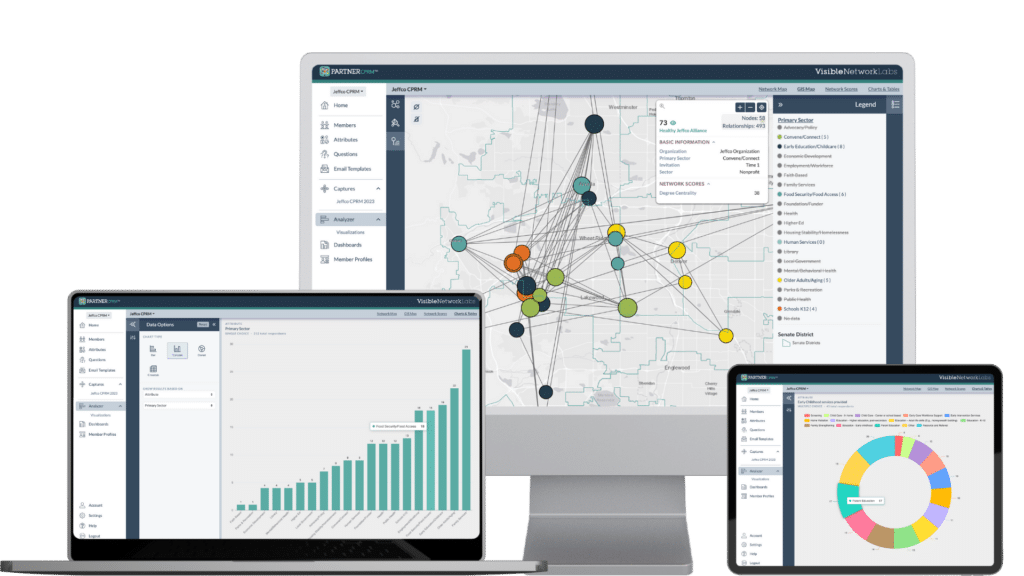
Tools and Frameworks for Strategic Network Design
Several evidence-based tools and frameworks can help you design the right network structure for your goals. For example, PARTNER CPRM developed by our team at Visible Network Labs is a valuable resource for assessing and optimizing network structures based on specific objectives. It provides data-driven insights into how well your network is performing in terms of trust, value, and outcomes, allowing you to make informed decisions about restructuring or enhancing your network.
Similarly, network analysis and visualization tools like Gephi and UCINET allow you to map and analyze your network’s current structure. These tools help you experiment with different configurations to see which would best meet your goals, offering a visual and analytical basis for your strategic decisions.
Conclusion: Choosing the Right Network Structure
Choosing the right network structure is not a one-size-fits-all decision. By understanding the strengths and weaknesses of different network structures, you can strategically align your network design with your collaborative goals. Whether you need to disseminate information quickly, drive innovation, foster cohesion, allocate resources, ensure resilience, or bridge diverse groups, network science provides the tools and insights to help you achieve success.
As you consider your network’s structure, keep in mind that the most effective networks are often those that are intentionally designed with a clear understanding of the goals they aim to achieve. By leveraging the principles of network science, you can build a network that not only meets your immediate needs but also positions you for long-term success in your collaborative efforts.
FAQ
Q1: What is a network structure, and why is it important?
A network structure refers to the arrangement of nodes (such as individuals or organizations) and the connections between them. The structure of a network influences how information flows, how resources are distributed, and how effectively the network can achieve its goals. Different structures are better suited for different objectives, making it crucial to choose the right structure for your specific collaborative goals.
Q2: How do I know which network structure is best for my goals?
The best network structure depends on your specific objectives. For example:
- If you need to spread information quickly, a small-world network is ideal.
- For fostering innovation, a network with many weak ties and structural holes is beneficial.
- If strong cohesion and collective action are your goals, a dense network is most effective.
- To efficiently allocate resources and coordinate activities, a centralized network works well.
- For resilience and adaptability, a decentralized network offers advantages.
- When connecting diverse groups, networks that bridge structural holes are essential.
Q3: What is a small-world network, and when should I use it?
A small-world network is characterized by high local clustering and short paths between any two nodes, enabling quick and efficient information dissemination. It’s best used when your goal is to spread information rapidly across a large group, such as in public health campaigns or awareness initiatives.
Q4: What does it mean to have a network with weak ties and structural holes?
A network with weak ties and structural holes features loosely connected nodes and gaps between groups. These weak ties allow for the flow of diverse ideas and perspectives, making such networks ideal for innovation and creativity. This structure is common in research and development environments where fresh ideas are key.
Q5: Why is a dense network structure recommended for building strong cohesion?
A dense network, where most nodes are interconnected, fosters trust and alignment among members. This structure is effective when you need to mobilize a group toward a common cause, as it ensures strong communication and coordination, often used in grassroots advocacy or tightly knit communities.
Q6: What are the benefits of a centralized network?
A centralized network has one or a few central nodes that control the flow of information and resources. This structure is highly efficient for resource allocation and decision-making, making it ideal for organizations like humanitarian groups that need to coordinate large-scale efforts quickly and effectively.
Q7: How does a decentralized network support resilience and adaptability?
A decentralized network lacks a single point of control, which means it can continue to function even if parts of the network are disrupted. This resilience makes it suitable for emergency response systems or any situation where adaptability to changing conditions is critical.
Q8: What are structural holes, and how do they impact network collaboration?
Structural holes are gaps between different groups in a network. Bridging these gaps with connections can bring together diverse perspectives and foster new collaborations. Networks that bridge structural holes are particularly useful for initiatives that aim to unify diverse stakeholders or create inclusive coalitions.
